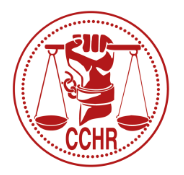
Why Teenscreen National Center, headquartered at Columbia University, terminated its psychiatric screening services at the end of last year still remains a mystery to a large extent. Teenscreen directors and spokespeople are absolutely mum on what happened exactly, but I came up with some highly probable reasons based on my internet research.
What is Teenscreen? (Brief History and Significance)
David Schaffer and his team of researchers at Columbia University developed the Teenscreen program starting in 1999. Based on pseudo-scientific studies, they developed a questionnaire that screened for mental health disorders and suicidal tendencies in middle- and high school teens.
Investigative journalist Evelyn Pringle writes:
“The truth is the survey is a fraud and cannot diagnose mental illness in kids. ‘The normally developing child hardly stays the same long enough to make stable measurements. Adult criteria for illness can be difficult to apply to children and adolescents, when the signs and symptoms of mental disorders are often also the characteristics of normal development,’ according to the US Surgeon General in 1999.”
Upon “diagnosis” of mental health issues using this survey, Teenscreen would push different psychiatric drugs to “treat” the teens with at-risk suicidal behaviors and other disorders. Big Pharma and taxpayer dollars were used to fund Teenscreen after its programs were launched nationally in 2003. Evelyn Pringle cites example upon example of this in her Op-Ed piece titled “TeenScreen – Angel of Mercy or Pill-Pusher.”
This conflict of interest resulted in heavy controversy and blowback from concerned parents and the media.
Laurie Flynn
Flynn has actively lobbied and worked for Teenscreen in several executive capacities since 2001. She had strong connections to pharmaceutical companies which enthusiastically invested in Teenscreen and continued to breathe life into it. Flynn also spoke numerous times in front of congressional committees on the importance and value of Teenscreen’s so-called pre-emptive strategies. In return, she received millions in federal, state and local tax revenue for Teenscreen’s expansion. She promoted Teenscreen on-air and in the papers.
By 2011, Teenscreen had about 2,000 testing sites in the U.S. and around the world.
Teenscreen’s Downfall
Laurie Flynn, who was Teenscreen’s executive director the year the Center closed down, and second-in-command Leslie McGuire both resigned from Teenscreen just a few months before Teenscreen announced it was folding. According to psychsearch.net,
“One source close to the scene said that Flynn and McGuire left with disagreements over policy issues. The source said that psychiatrist Mark Olfson was the ‘interim director’ who we discovered only showed up once a week on Wednesdays for one hour!”
Without a strong driving force like Laurie Flynn to keep Teenscreen going, it’s no wonder that this initiative came to an abrupt end. It didn’t seem like a shortage of cash flow or a lack of resources and facilities is what halted Teenscreen. It’s leadership politics that played a key role in bringing Teenscreen’s downfall.
Youth Behavioral Risk Survey
This survey is still implemented nationally in schools. It’s used to gain raw data on teen drug and alcohol abuse, diet, physical activity, and other health behaviors in teens. Certain psychiatric and psychological studies are conducted based on this information and mental health “conclusions” and “treatments” are proposed. This survey and the organization behind it aren’t directly pushing Pharma pills like Teenscreen did, but they do fuel mental health policy and psychiatric initiatives – not good news.
Free Baker Act Help - Call Us: 800-782-2878
info@cchrflorida.org


0 Comments